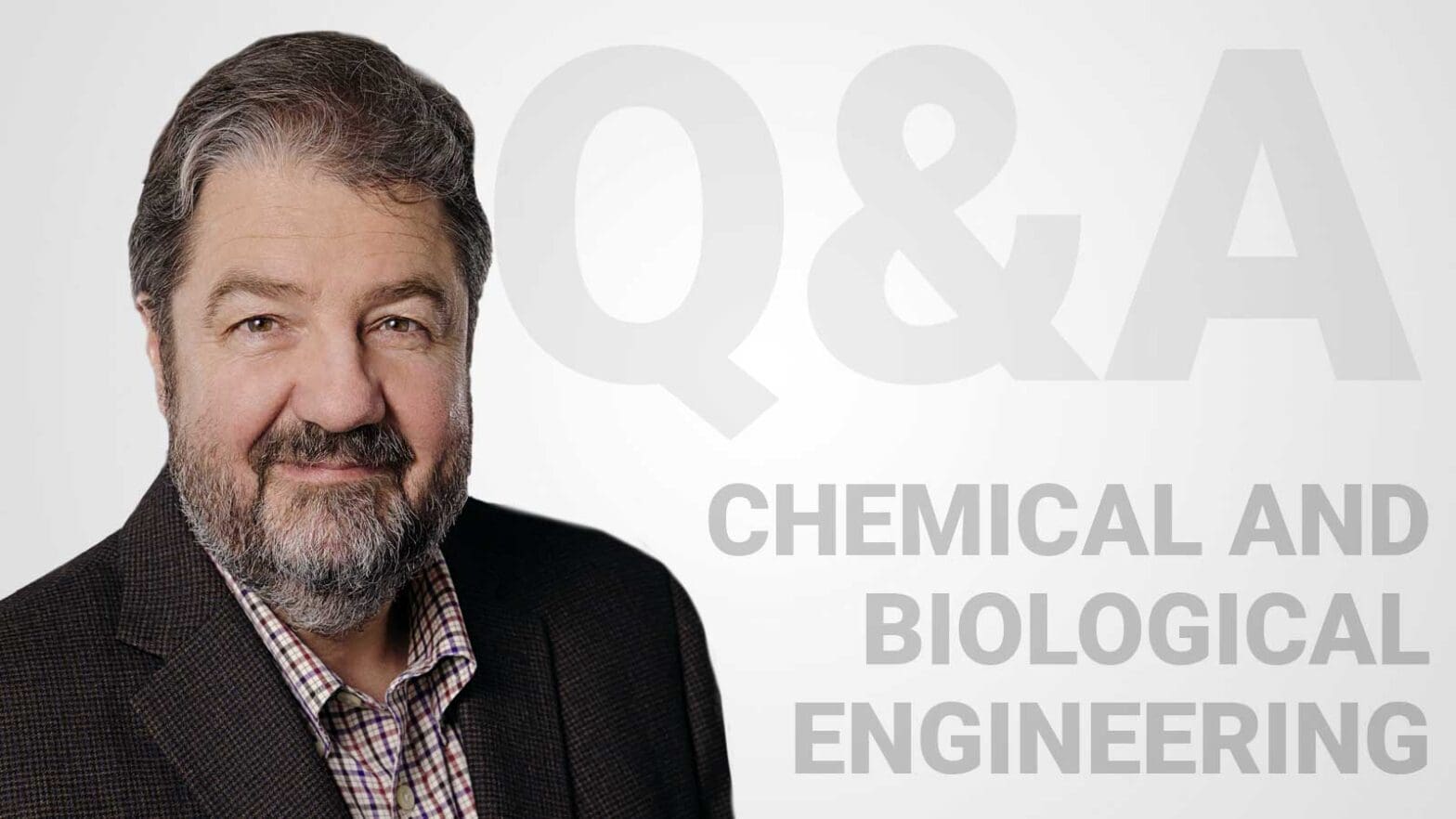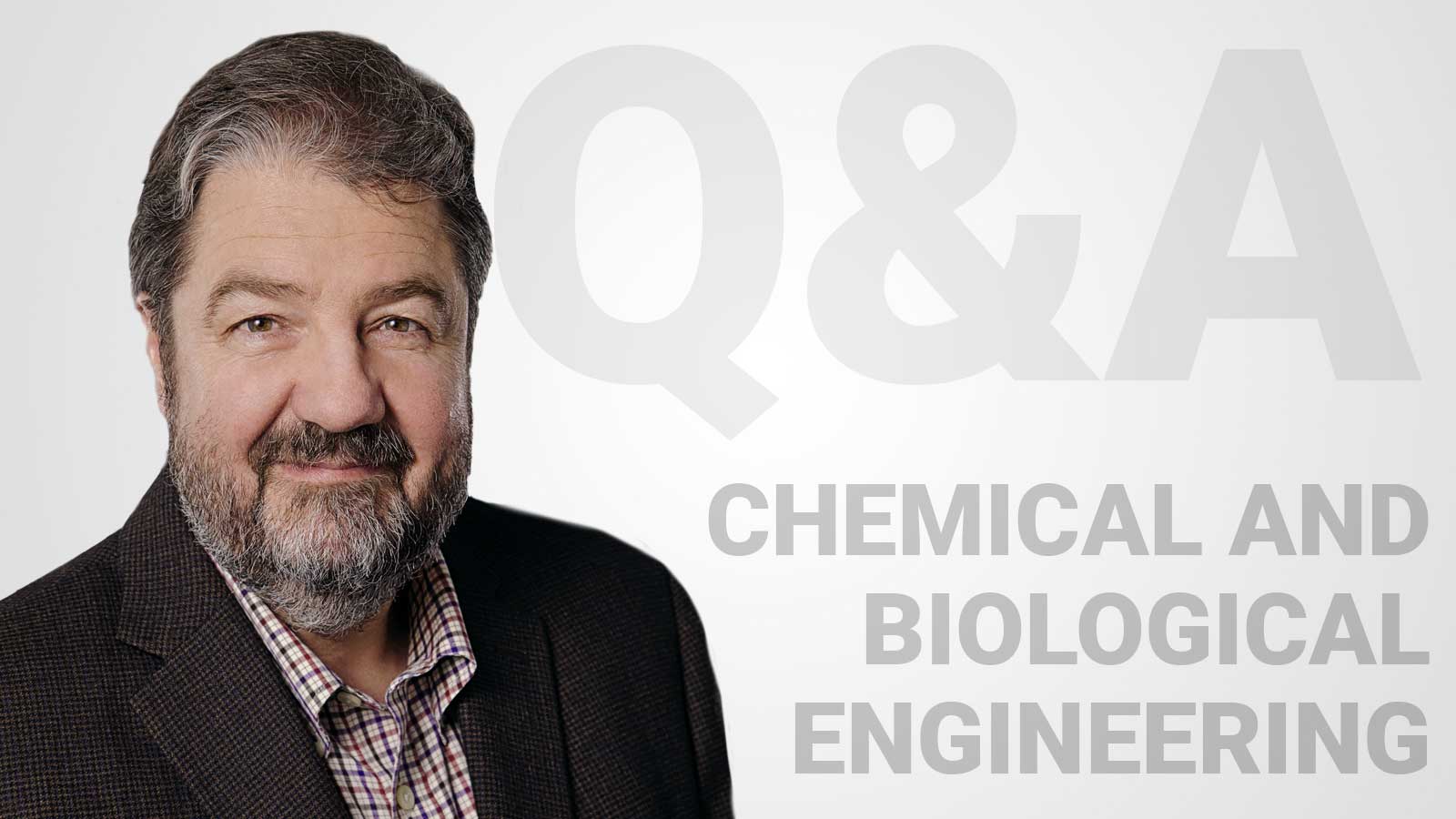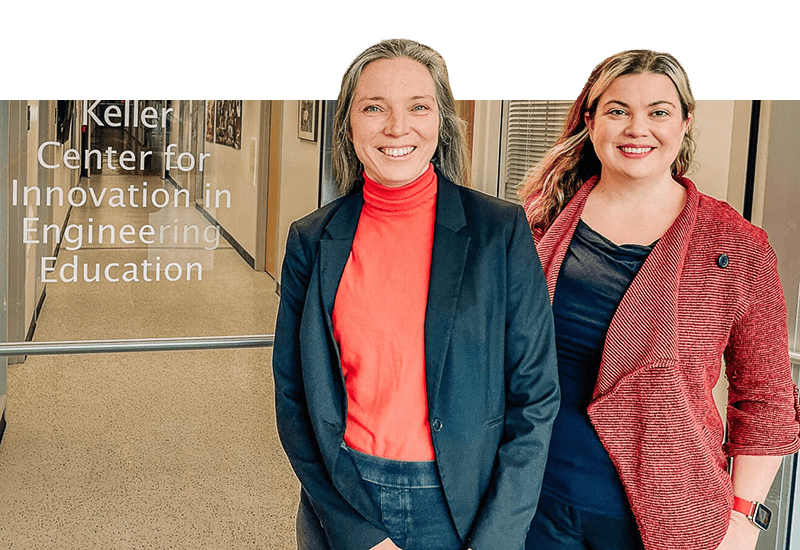
Wide collaborations and a ‘close-knit community of scholarship’ catalyze advances
By
on
This is from the series Conversations With Chairs and Directors
This is the second in a monthly series of updates from chairs and center directors on news and innovations in their departments.

Q. What’s new in the culture of chemical and biological engineering? How is Princeton situated and how do you plan to build on what’s here?
A. Our approach is straightforward but effective. The first step is to identify key areas in the field where there is both need and opportunity. The second step is to hire talented investigators to work in those areas and provide them with every available resource. In this way, we honor the profound history of the department by investing in the people who will carry that history forward for decades to come.
One of these key areas is bioengineering, which has become a major focal point for the University. While several departments and centers are involved in this domain, CBE plays a key role – we are the nucleus, if you will – in this field. We have groups working in a wide range of length scales, from precision antibiotics to tissue formation and development and much more in between. Activity in these areas continues to balloon in scope. This year, for example, we will have the department’s first Howard Hughes Medical Institute (HHMI) Investigator in Cliff Brangwynne, who studies the structure and self-assembly of living biological materials. The appointment to HHMI is a great honor for Cliff and an exceptional opportunity for growth of research in this area.
Catalysis is another of these key areas. Generally speaking, catalysis is crucial in the drive to make industrial processes more efficient, and therefore cheaper and more sustainable. The need for these processes will only grow in the coming decades, so improving catalysis and extending its reach will become more important than ever before. In addition to the strong representation we have had in this domain going back decades, we are redoubling that strength with a new faculty member in Michele Sarazen, who works with plentiful substances to engineer a safer, cleaner world.
Finally, a large fraction of our current research program investigates the characterization and synthesis of complex materials. More than a third of our faculty work in this domain. But still, last year we hired two faculty members (Pierre-Thomas Brun and Sujit Datta) whose work touches on new aspects of materials science and engineering. Our advantage is in the combination of cutting-edge theory and novel experimentation, so that future materials continue to improve the quality of human life.
Work from each of these three areas feeds back into the others and creates the kind of close-knit community of scholarship that defines this department. It’s worth mentioning that the Princeton model allows us to do all of this – to continue investing in people who want to push boundaries – despite the challenges posed by the current environment for research funding.
Q. There is so much interesting research that I know it is impossible to cover it all. But are there a few additional areas that you would like to highlight? Any notable collaborations with colleagues in other departments?
A. It’s true! There are too many to name. But I can point to a few more, in addition to those mentioned in my response to the previous question.
More than a third of our faculty have projects in the Princeton Center for Complex Materials (PCCM), funded by the National Science Foundation (NSF). The center has received continuous funding from NSF for more than two decades. One of the three current interdisciplinary research groups in PCCM is co-led by Rod Priestley and focuses on structure and dynamics in confined polymers. Right now, we also have several “seed” groups underway exploring new problems. A noteworthy new seed group, “Harnessing the Rules of Life to Enable Bio-inspired Soft Materials,” includes many principal investigators from this department, as well as collaborators from mechanical and aerospace engineering and molecular biology.
Aside from that, two new Focused Research Teams were announced recently. One will investigate next-generation “precision” antibiotics, which will be innocuous to healthy microbiomes and work to slow the emergence of resistance. The other will investigate the engineering of synthetic organelles to optimize the ability of living cells to carry out specific biomolecular reactions. The teams are funded by the School of Engineering and Applied Science and feature faculty from three departments, including four investigators from CBE.
Q. How has teaching changed for chemical and biological engineering? Do you have plans for new courses or other initiatives?
A. In fact, yes, we have a new course that we are introducing this spring. This course, CBE 199, taught by departmental representative Jamie Link, will have as its target audience first-year students who are curious about chemical and biological engineering but who do not have a clear idea of what we do or how we do it. Students will get an introduction to the field, broadly, and preview advanced coursework. While the departmental curriculum is challenging, and the concepts explored always complex, the impacts of this field affect a vast portion of modern life, from the grand challenges of making the planet livable right down to the basics of our daily routines.
More generally, regarding instruction, we are constantly evaluating the success of teaching and learning in this department. Over the past couple of years we have shifted toward models that are more active and that seek to optimize the learning environment. Studies show that students perform better when they are more engaged during class time, so we’ve worked to have them spend less time in a traditional lecture and more time asking questions, solving problems and interacting with the instructor, with the assistants in instruction and with each other. We are particularly excited to have Nancy Lape, the Kenan Visiting Professor for Distinguished Teaching, teach the core Separations course to juniors using active learning techniques.







